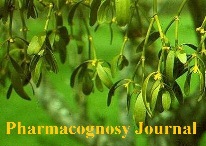Volume 4, Issue5
Pathogenesis of Herpes Zoster: A Review
Author: Rajesh Gupta, Preety Gupta, Shivani Gupta
Abstract: Herpes zoster, or shingles, is a localized disease characterized by unilateral radicular pain and a vesicular rash limited to the area of skin innervated by a single dorsal root or cranial sensory ganglion. Whereas varicella, or chickenpox, results from primary exogenous varicella-zoster virus (VZV) infection, herpes zoster is caused by reactivation of endogenous VZV that has persisted in latent form within sensory ganglia following an earlier episode of chickenpox. In contrast to recurrent herpes simplex, herpes zoster is commonly associated with severe pain: prodromal pain often precedes the rash by several days; pain usually accompanies the dermatomal rash of herpes zoster; and clinically significant pain and allodynia may persist for weeks, months, or even years after the herpes zoster rash has healed, a debilitating complication known as postherpetic neuralgia (PHN). The incidence and severity of herpes zoster and PHN increase with age in association with an age-related decline in cell-mediated immunity to VZV. The Shingles Prevention Study—a randomized double-blinded placebo-controlled trial—sought to evaluate the capacity of a live attenuated VZV vaccine to protect older adults from herpes zoster and PHN by boosting their waning cell-mediated immunity to VZV. The study demonstrated that the zoster vaccine produced significant reductions in the incidence of herpes zoster, in the burden of illness caused by herpes zoster, and in the incidence of PHN.
Download Full Article: Click Here
Support Us
If you are interested in supporting our work and would like to contribute, you are welcome to mail me at jpbr.anil@gmail.com or at info@thepharmajournal.com it will be a great help and will surely be appreciated.

